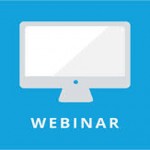Electronic medical records are developed using software systems that manage health-care documentation for medical services facilities. As technology has progressed, the advent of paperless access to records of many types has become more popular. Electronic medical records allows for much easier access to critical medical data on a faster basis for patients which is also more convenient for doctors. This system has allowed for more streamlined health care within both inpatient and outpatient medical environments. Health-care practitioners and facilities use electronic medical records systems to maintain, manage, monitor and document modern health care more efficiently.
Instructions:
1. Create a table or chart in a word processor with four columns or use a large sheet of paper and write the chart by hand. This document will be used to enter and compare data about three chosen electronic medical record solutions. Title the first column “Desired Features” and list out all of the specifications that are important to you in a medical records solution. For example, features might include security system, an integrated calendar, demographic tools, a notes section and drawing abilities. You can add to this list as you begin to research the products available.
2. Visit websites like those of Allegiance MD, Waiting Room Solutions, Acrendo Software, VeinSpec EMR and AdvantaChart. Look at each software specifications and features list. Add new features and specifications to the first column of your chart if they are must-haves for your situation.
3. Thoroughly examine the specifications and features of all of the electronic medical records software programs. Decide which three solutions are the most appropriate for your use. Add the three software names chosen to your table or chart document. Put the name of each software over the top of a column. List the features of the three software types in the corresponding column below the name. For example, if listing Allegiance MD features, put features for that solution under the column that contains that name. Line up each feature against the first column that contains your must-have features. For instance, if “sorting” is listed in the first column and Allegiance MD has a sorting feature, list that feature under the Allegiance MD column across from the “sorting” listed in your first column.
4. Compare the prices offered from each solutions company. Price quotes need to include all costs, such as the program, the installation and technical support. Ask about training packages available and their costs for each type of software.
5. Alternatively, make a preliminary checklist of features that are important to you in a medical records solution. Print out features lists from each of the three solutions chosen websites, if feasible, or create a document to list each solution’s features. Compare your checklist to the separate feature lists for each solution.
Tips & Warnings
- Be sure to save the table or chart to a document frequently if using a word processor.
- Consider what kind of access will be provided, such as through the company, in-house on the internet or a combination thereof.
- Consider using Software Advice to look at its free demonstrations of electronic medical records products from various companies.
- Determine that the records network will be secure with exclusive access for your organization.
- Confirm pricing structures for each software solution. Call each company to ensure that your understanding of the cost is valid and correct.
- Make a note of each person you speak with for reference later if needed.































